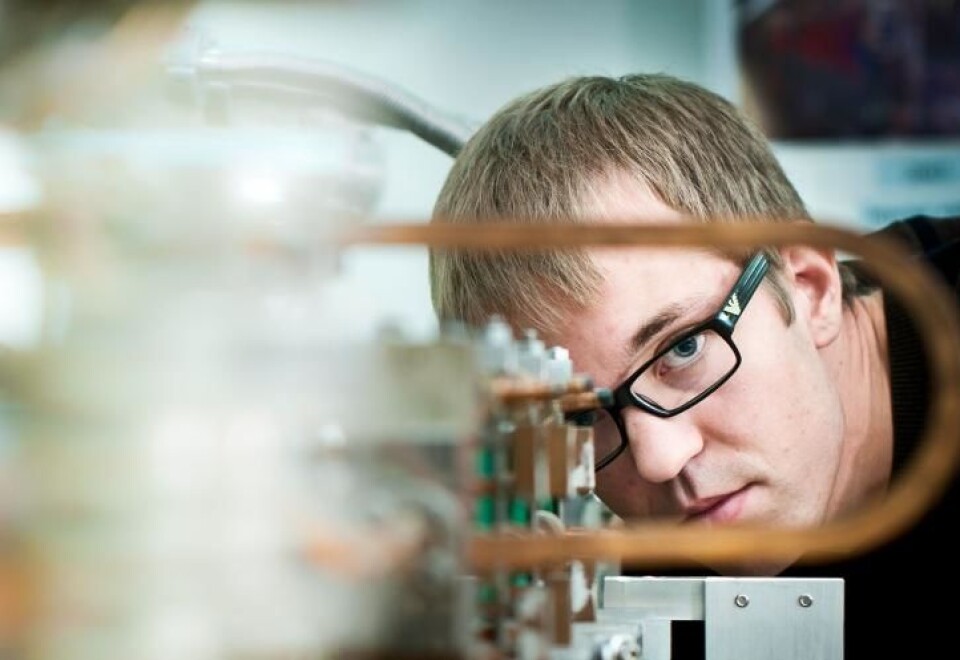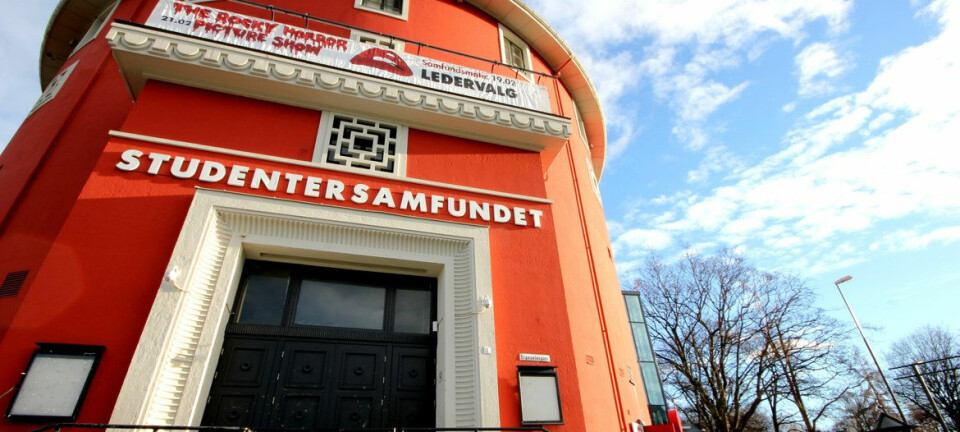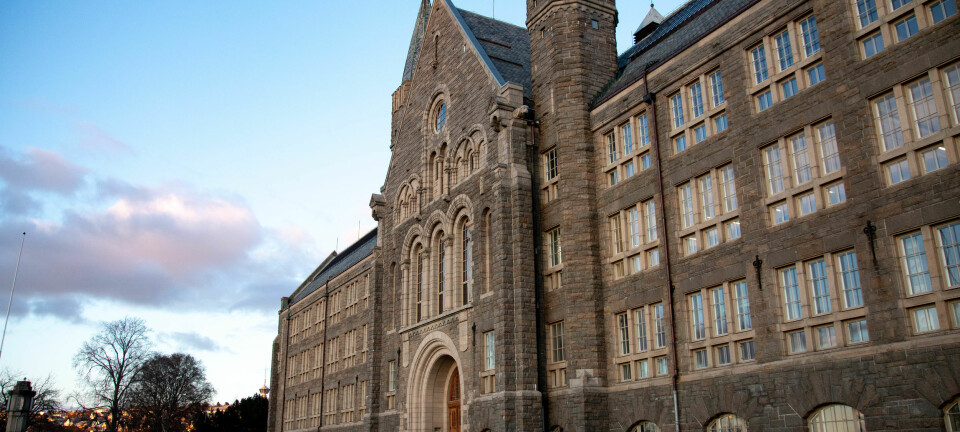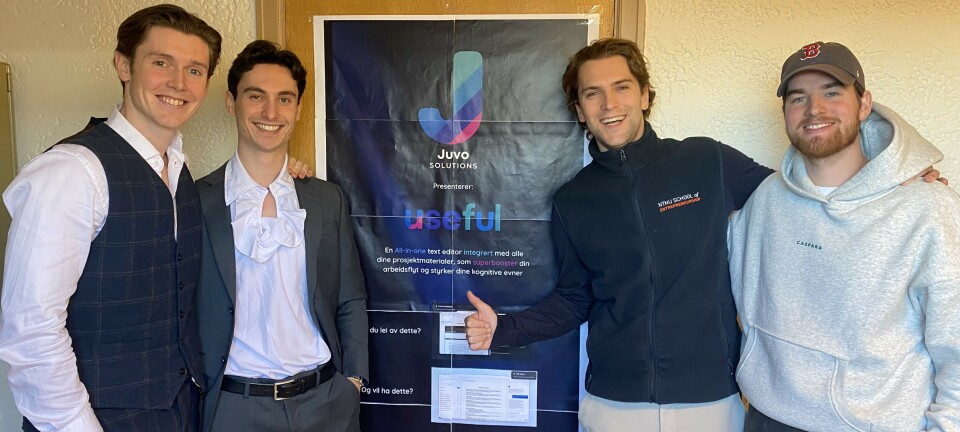
CERN: the Hunt for the Unknown
On the outskirts of Geneva, scientists gather from all around the world to fight against the limits of science.
“He looks like a physicist, follow that man!”
We have left the safety of the red, round Samfundet far behind and, with our suitcases rattling behind us, are hot on the heels of the man with the beard and corduroy jacket. A PhD must be a requirement for every person wearing a corduroy jacket in Geneva. After much back and forth, we’re finally on the right track as the city lights and sounds fade behind us. A glowing dome appears in the distance, and we soon arrive at spear tip of research, the physicists’ mecca between Switzerland and France. CERN.
The Creation of the Universe
The year is 2008. The world is holding its breath. Web newspapers are counting down to judgment day, and in a few minutes, we will find out whether or not Switzerland is swallowed by a black hole. Three years later, the work is still continuing along its usual path on the outskirts of Geneva, and excited journalists are flocking to the heart of CERN, the particle accelerator.
Most people know CERN as the place where researchers are trying to recreate the Big Bang, thereby solving some of the universe’s biggest mysteries. No one yet knows why energy and particles organize themselves and create mass.
Lasse Normann is among those who operate the biggest accelerators, and has worked with CERN for nearly 30 years.
“All fundamental physics assumes the existence of the so-called Higgs boson. This particle has pre-defined characteristics which allow the force of gravity to function, and without gravity, there would just be a bunch of dust flying around the universe. Stars and planets could not exist, only free energy.”
In Awe
In an attempt to push the limits of science, researchers from all corners of the world have joined forces her at CERN. As such, one expects a Nobel Prize around the corner, and I feel a certain awe as we sit down in the cafeteria.
Any pre-conceived images of a uniform empire of Einstein’s disciples are quickly disproved. Harald Villmo is an economics student from Trondheim, and is writing his master thesis on the interactions between contractors in megaprojects.

“For my thesis, I’m comparing the project management for Statoil’s Gudrun project to the Atlas project here at CERN. In my fourth year at in Trondheim, I came in contact with someone at Sintef who recommended that I apply to write my thesis here in Switzerland.”
Most people might think that CERN is full of theoretical physics geniuses, but a closer look at the payroll records show that more than 50% of the employees are IT-people or engineers.
“I decided to give it a try. I’ve always thought that what they’re doing at CERN is exciting, and I found out that they need much more than just physicists. If you have an interesting question to write about, you’re easily considered. It’s more important than specialization or academic results.
The Start Pistol
Security is important, and after having passed through several check points, we are finally here. In front of us, Yngve Levinsen, a thesis student is gesturing and explaining how the hydrogen gas is pumped in and the electrons are stripped away so that only atom nuclei are left. These are fired off through Linac2, the accelerator’s first gear.
“It’s here that the whole process is put in motion. The particles are pumped back and forth by magnetic waves and travel at increasingly high speeds, at the same time the density between the protons is increases. The protons are sent off via a “booster” to the Proton Synchrotron (the complex’s first big accelerator, which has been in operation since 1959, journ. remark) This synchronizes the particles so that they organize in “81 proton packages” with 25 nanoseconds of space in between,” says Levinsen, enthusiastically.
He has only a few months left of his PhD work. That and his job as a guide for the complex gives him better knowledge of the technical details than most.
“Afterwards, the packages are sent to Super Proton Synchrotron, the complex’s biggest particle accelerator before Large Hadron Collider (LHC) was completed in 2008. Here the energy is increased even more, before entering LHC.”
LHC is the last weapon in CERN’s in arsenal for furthering science, with its 27 kilometers stretched in circular track, one hundred meters under Swiss and French soil.
“The speed now reaches up to the speed of light, and the protons begin to increase in mass rather than moving at a faster speed.”
Half the protons are sent through one tube, while the others travel in the opposite direction through another tube. These two tracks have four points of intersection. When they are at maximum speed, the protons are synchronized and explode in a head-on collision at 14 teraelectron volts. Each proton wave carries the same amount of kinetic energy as a 400 ton train travelling at 150 kilometers an hour. These collisions occur in the ATLAS detector, among other places. With an 46x25 meter area, it’s the world’s most advanced camera, and combined with the biggest accelerator ever built, researchers have ambitions of taking fundamental physics to new heights.
“The clearest goal is to find the Higgs boson, but it’s also a hunt for the unknown. We’re looking after something that can take us further and give us a better understanding of the world around us. What that could be is impossible to say. It was assumed that Higgs would make itself known in the fields of energy which we have now researched, but that wasn’t the case. Many believe that the world’s construction is more complicated than just that, and that if Higgs doesn’t show up, that’s interesting in and of itself,” says Normann.

“It shows how wrong we were, how little we actually know.”
“This is the future!”
Reidar Lunde Lillestøl studied electronics at Gløshaugen, and heard about CERN’s master program through his uncle. Now, he fits in comfortably in Geneva and is showing around test lab for this morning’s accelerator, Compact Linear Collider (Clic). The contrast with his high school music program is big. After having spent a few years on campus as a technical master’s student, Lillestøl applied for a master thesis position and is now completing his PhD in physics.
“If everything goes according to plan, Clic will be heir to the current LHC. The advantage with a linear accelerator like this is that it will generate cleaner collisions. LHC is good for testing whether or not we’re at all on the right track and can have a much higher collision frequency in order to test a broad energy spectrum. But it gives off a lot of background noise, making the results more difficult to interpret.”
Colliding particles with LHC is comparable to firing off a rifle in the dark and hoping to hit something. If success seems possible, you invest in a rifle with a scope and night vision.
“With Clic, we could improve our aim and really obtain an understanding of what’s happening when particles and mass are created,” explains Lillestøl.
Might be on the Wrong Track
Even though the goal is to push the limits of physics, no one knows what lies beyond the borders of current science. Perhaps this research is on the wrong track. This is why most people we meet are also focusing on other things than the results of the research.
“The most important thing is to be part of the process and the construction of the new accelerator. The results themselves are of lesser consequence; pushing the limits of technology is just as exciting if not more so,” says Lillestøl.
Clic is an enormous project. The accelerator itself will stretch out in 48 kilometer long track. Six billion Euros will be thrown into the particle accelerator each year. Providing these funds cannot happen without knowledge of whether or not the project will be fruitful. The degree to which the Clic project will be completed is dependent on the LHC’s results during the next few years. There is another competing accelerator ready for construction in the USA. What LHC manages to produce in the near future will determine which accelerator will receive funding. Finding the Higgs boson might not be enough.
“I hope to follow Clic through to the last, but we don’t know if it will take five, seven or fifteen years before construction is complete. The future is uncertain,” says Lillestøl.
Cernland

Down to the Control Room
At LHC’s control central and completely by coincidence, we meet Lene Drøsdal. As one of the few female Norwegians at the complex, she has been working as a trainee for two years. She is now ready for now challenges and is ready to begin a doctoral degree in accelerator physics.
“I discovered CERN at company presentation at the University of Oslo. Before that, I thought that CERN only worked with particle physics, but there is a huge need for other disciplines, IT for example,” says Drøsdal. The Oslo girl clearly defies the stereotype of a 60 year old physicist with a knit sweater and slippers.
“Being a girl in an environment dominated by men has been no problem. We are taken just as seriously as the boys, but it wouldn’t hurt to have a more even distribution of the sexes,” she says.
We take a trip down to the control room, where all activity in LHC is monitored around the clock, to check out the program she developed. Opening up the program in the conference above won’t work; the program is too important for that.
“Master theses seem pointless and without perspective until you really get started. Here, I felt like I could contribute to something useful within a few weeks,” says Drøsdal, as she tries to hide her pride at seeing her master thesis project pop up on the screen in the brain of the particle accelerator.
In this program, several hundred million particle collisions are registered each second, and it is within this mass of information researchers are hoping to see a sign of the Higgs boson. They also dream of finding unknown dimensions and proof of super symmetry, hypothetical twins of electrons, quarks and other known fundamental particles. They require so much energy to create that previous accelerators have not been able to create them.
Home Sweet Norwegians
We are not the only Norwegians who have found ourselves down in this colossal research complex at the heart of Europe, but that is not too far from the truth. Of nearly 2,300 employees, only 40 are of Viking descent. Jens Vigen is CERN’s head librarian, with responsibility for all published works. The look in his eyes reveals a man who realized his childhood dream 20 years ago and is still living it. The walls are covered with awards and certificates from the past decade, but a diploma of lifetime membership to the Student Society in Trondheim takes the place of honor. He was both archivist and leader in 1993 and 1994.
“When Norway pays to 2-3 % of CERN’s six billion annual budget, it’s incomprehensible that we aren’t better at taking advantage of the possibilities,” says Vigen.
CERN’s British HR chief, James Purvis agrees. He believes that the unique conditions in Norway explain some of this.
“Norway is one the best countries to live and work in. You have the oil industry, high wages and good maternity benefits. People aren’t so willing to move from Norway, and it’s not well known that we have a big demand for engineers. After all, they’re the people who make things happen,” he says.
Vigen tells of good conditions for students who choose to write their master thesis at CERN.
“A technical master student receives 3,000 Swiss francs a month. This corresponds to about 19,000 kroner with the current exchange rate, and you can apply to live here for six or twelve months.”
A ringing telephone interrupts the interview. Vigen is needed somewhere else. “Having a Swiss boss is torture,” he says, jokingly, before he runs off with a big grin on this face.
An Unsure Future
In contrast with busy corridors inside, it is quiet and peaceful outside the complex. The post apocalyptic landscape spreads itself across the retina. Warehouses and mysterious chimney smoke rises up from outside the fenced-off area where we stand. A statue of Shiva stands With steep mountains and grape vines in the backdrop. In the search for the unknown, no one knows what can be uncovered. Some fear that everything will go wrong and that a black hole will swallow the earth, while others view research as a necessary activity for man’s continued existence. Nothing could serve better to watch over the place than the Hindu god, the creator, the destroyer and the protector of worlds.

































